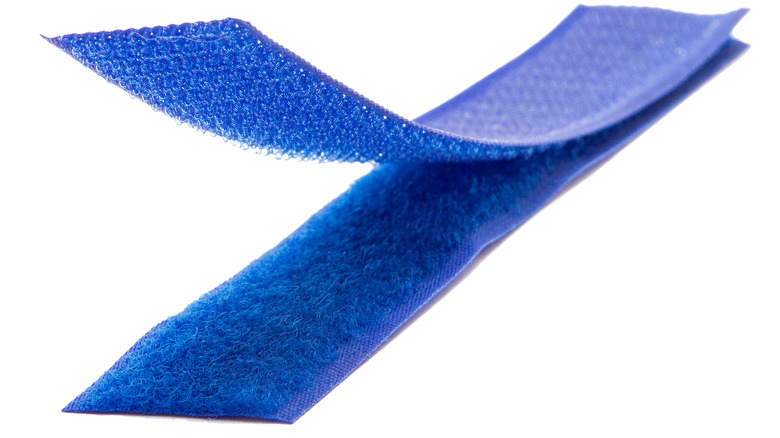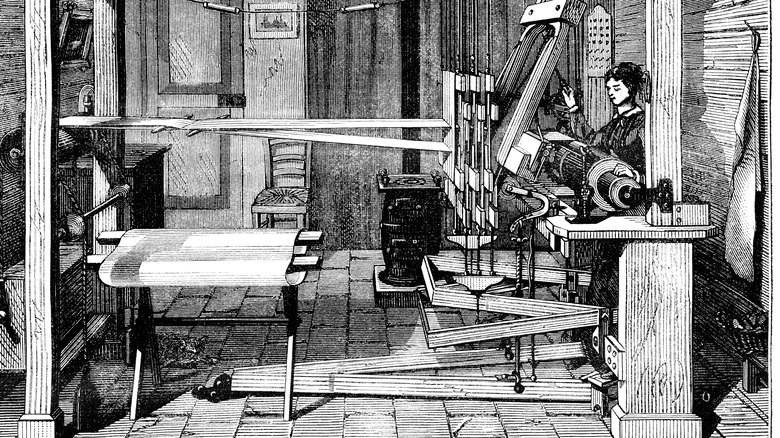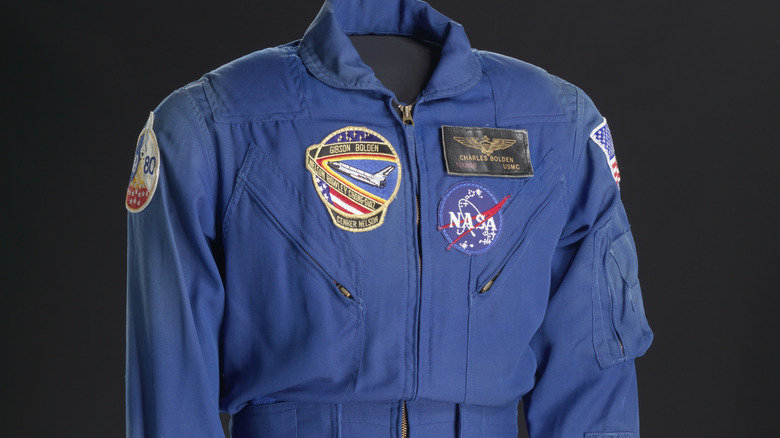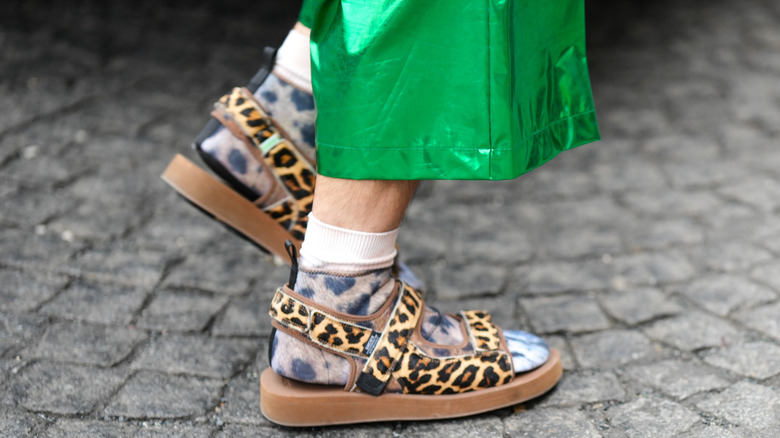The Real Reason Velcro Was Invented
First, let's dispel a sticky rumor. Velcro was not invented for space travel. Rumors persist that the Velcro fastening system was developed by the National Aeronautics and Space Administration (NASA), along with the sealing coat known as Teflon, and the orange-powdered drink mix called Tang. According to NASA's website, none of these rumors are true. Though NASA has used all three products on space missions, the organization is not responsible for their invention. Velcro is a brand-name for a specific hook-and-loop fastening system that was used with great success on Apollo missions to strap down equipment in zero gravity, but it was not invented for that purpose.
Velcro fasteners are not a space-age invention at all. According to the Velcro Brand website, the idea dates back to 1941, 16 years before the first-ever satellite, Sputnik 1, would be launched into space, igniting a space race between the United States and the Soviet Union. The inspiration for the unique fastening system was decidedly earthly: It was a sticky seed pod from the common plant known as burdock.
The seed of an idea
Inventor George de Mestral of Switzerland was out hunting with his Irish Pointer in 1941 when he noticed his pants and his dog's fur were covered in burs from a burdock plant, according to New York Magazine. Where most hunters would find only annoyance, de Mestra found opportunity as he studied the burs under a microscope. De Mestral had been patenting his own inventions since he was 12, according to the news site SwissInfo.ch, and was a graduate of the Federal Institute of Technology. "He was inspired by science," Velcro CEO Fraser Cameron told New York Magazine. "If you need to know how something works, sometimes you just need to know."
What de Mestral found were tiny hooks, hundreds of them (per HerbWorld), which allowed the seeds to attach themselves to any passing animal. De Mestral was convinced he could reproduce this natural phenomenon synthetically, to create a fastener like a nonmetal zipper. He envisioned two sides coming together: one side with tiny hooks, like the burrs he brought home from his hunting trip, and the other side with tiny loops, as in the fabric of his pants. Placed together, the two sides would catch and hold firmly to one another until pulled apart.
Weaving it together...
George de Mestral had a hard time getting his seemingly simple invention made, according to New York Magazine. His invention required both hooks and loops to fasten properly. While loops were easy to mass-produce in a textile mill, hooks were another matter. "The hooks are very tricky," Velcro CEO Fraser Cameron told New York. "You weave them like a loop, but you have to cut them at a very precise angle, and it's very difficult to do."
De Mestral was not deterred. He traveled to Lyon, France, the center of the French silk industry a century back, and worked with a weaver, according to ThoughtCo. It took over 10 years for de Mestral to develop a special loom that held the loops at the precise angle necessary to cut them down with modified barber's shears, according to New York. The result was Velcro, a trademarked name devised from the French words velours, meaning velvet, and crochet, meaning hook, according to SwissInfo.ch. De Mestral patented his invention in 1955.
What to do with it
De Mestral began marketing his invention, according to HookandLoop.com. Opening shops in continental Europe, the U.K., and Canada, he hoped his invention would take hold like the tiny hooks themselves. By 1957 de Mestral opened his first store in the U.S. But as Velcro hook-and-loop fasteners hit the world market, they did not fly off the shelves, at least not at first. The fashion and clothing industries shunned the invention, according to New York Magazine.
According to Velcro CEO Fraser Cameron, the product was too innovative for its own good. "The problem was people thought 'What the hell is this stuff?'" Cameron told New York. "When you have a breakthrough product, it can be difficult to figure out how you use it." Though interesting, Velcro was not considered particularly useful until an unlikely customer used the fastener in one of the most hostile environments known to humans: the depths of space.
Fly me to the moon
The U.S. National Aeronautics and Space Administration (NASA) had a problem, and that was how to keep objects and people from flying around in zero-gravity. They needed a fastening system that was flexible and strong, easy to attach and detach as needed, and non-corrosive in extreme conditions. The solution to their space-age problem was George de Mestral's humble invention, inspired by the burdock plant.
NASA astronauts used Velcro on jobs large and small, from fastening watches to securing instruments and tools in zero-gravity, according to the Velcro company website. The fastener was used in every part of the space suit: attaching name tags, boots, helmets, and breathing aparati. Velcro helped astronauts live their daily lives without gravity, holding on to their cameras, bags of food, and writing implements. In fact, it was a Velcro-bedecked Duro "Rocket" pen that Buzz Aldrin used to repair a circuit-breaker in 1969, saving the Apollo 11 mission from disaster. (According to Luxurylaunches, the pen will be auctioned off at the 2022 Sotheby's annual Geek Week auction, Velcro still attached.)
Velcro takes hold
By the 1960s, as Velcro made life easier for astronauts in space, it also got picked up by clothing designers, according to New York Magazine. French fashion designer Pierre Cardin was especially fond of using it. By 1968 Velcro had transformed footwear, according to mentalitch, by allowing young children to fasten their own shoes before they could tie a bow. Velcro went on to revolutionize equipment used in the medical field, and can now be found in everything from blood-pressure cuffs to orthopedic boots. Velcro is also one of the staples used by clothing designers to make adaptive clothing to allow people with disabilities to dress independently, according to USA Today.
To think that one of the most useful and universal inventions came about as a result of an unlucky encounter with a sticky seed pod on a hunting trip. The idea, brought into existence on the weaving looms of Lyon, eventually took hold not only all over the world, but in space.





